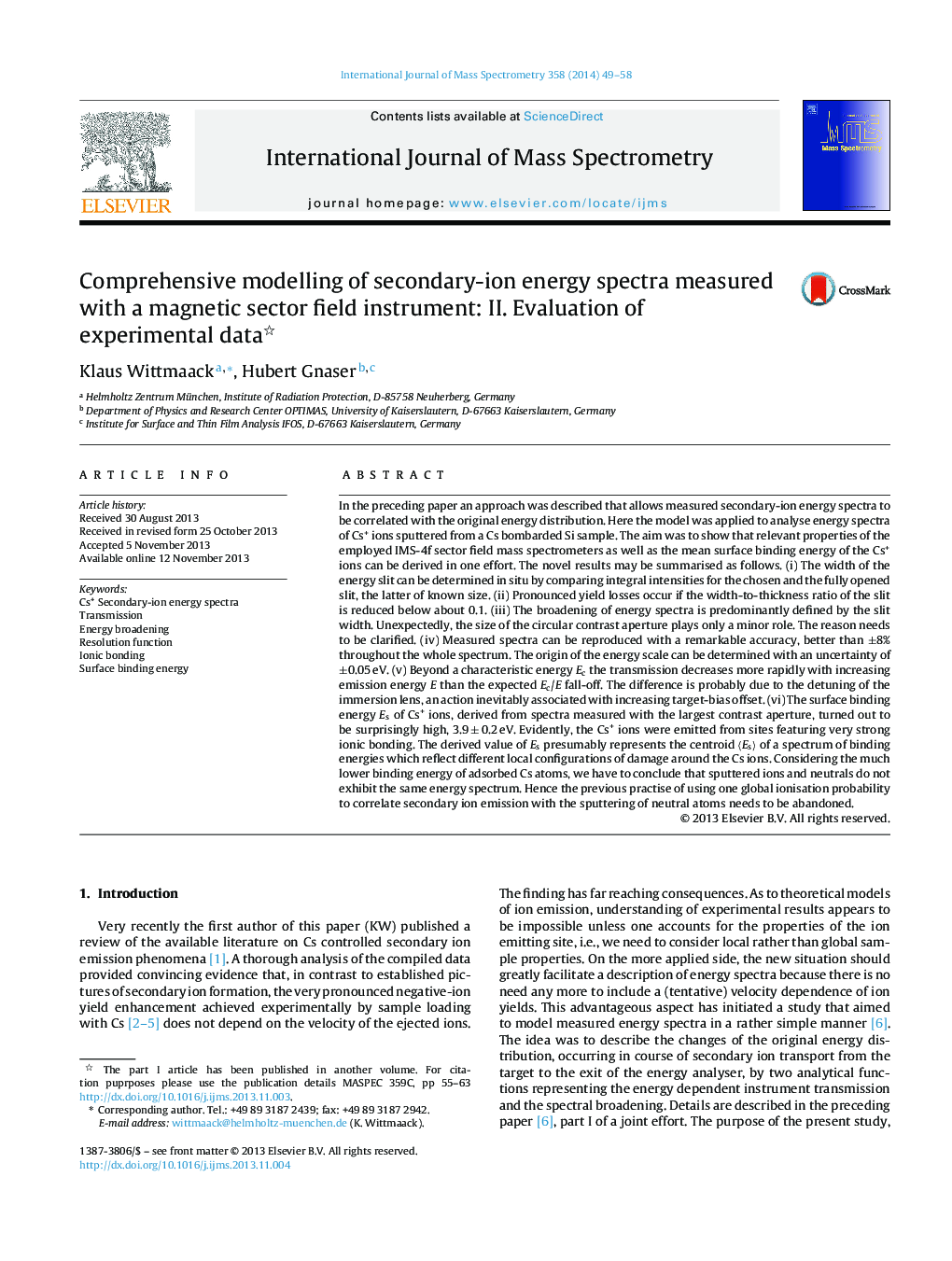| Article ID | Journal | Published Year | Pages | File Type |
|---|---|---|---|---|
| 1192492 | International Journal of Mass Spectrometry | 2014 | 10 Pages |
•Simple model to describe energy spectra is compared with measured data.•Essential predictions of the model are verified for Cs+ emission from Si.•Properties of the employed magnetic mass spectrometer derived.•Mean surface binding energy of Cs+ determined to be 3.9 ± 0.2 eV.•Established picture of secondary ion formation calls for revision.
In the preceding paper an approach was described that allows measured secondary-ion energy spectra to be correlated with the original energy distribution. Here the model was applied to analyse energy spectra of Cs+ ions sputtered from a Cs bombarded Si sample. The aim was to show that relevant properties of the employed IMS-4f sector field mass spectrometers as well as the mean surface binding energy of the Cs+ ions can be derived in one effort. The novel results may be summarised as follows. (i) The width of the energy slit can be determined in situ by comparing integral intensities for the chosen and the fully opened slit, the latter of known size. (ii) Pronounced yield losses occur if the width-to-thickness ratio of the slit is reduced below about 0.1. (iii) The broadening of energy spectra is predominantly defined by the slit width. Unexpectedly, the size of the circular contrast aperture plays only a minor role. The reason needs to be clarified. (iv) Measured spectra can be reproduced with a remarkable accuracy, better than ±8% throughout the whole spectrum. The origin of the energy scale can be determined with an uncertainty of ±0.05 eV. (v) Beyond a characteristic energy Ec the transmission decreases more rapidly with increasing emission energy E than the expected Ec/E fall-off. The difference is probably due to the detuning of the immersion lens, an action inevitably associated with increasing target-bias offset. (vi) The surface binding energy Es of Cs+ ions, derived from spectra measured with the largest contrast aperture, turned out to be surprisingly high, 3.9 ± 0.2 eV. Evidently, the Cs+ ions were emitted from sites featuring very strong ionic bonding. The derived value of Es presumably represents the centroid 〈Es〉 of a spectrum of binding energies which reflect different local configurations of damage around the Cs ions. Considering the much lower binding energy of adsorbed Cs atoms, we have to conclude that sputtered ions and neutrals do not exhibit the same energy spectrum. Hence the previous practise of using one global ionisation probability to correlate secondary ion emission with the sputtering of neutral atoms needs to be abandoned.
Graphical abstractFigure optionsDownload full-size imageDownload high-quality image (146 K)Download as PowerPoint slide
